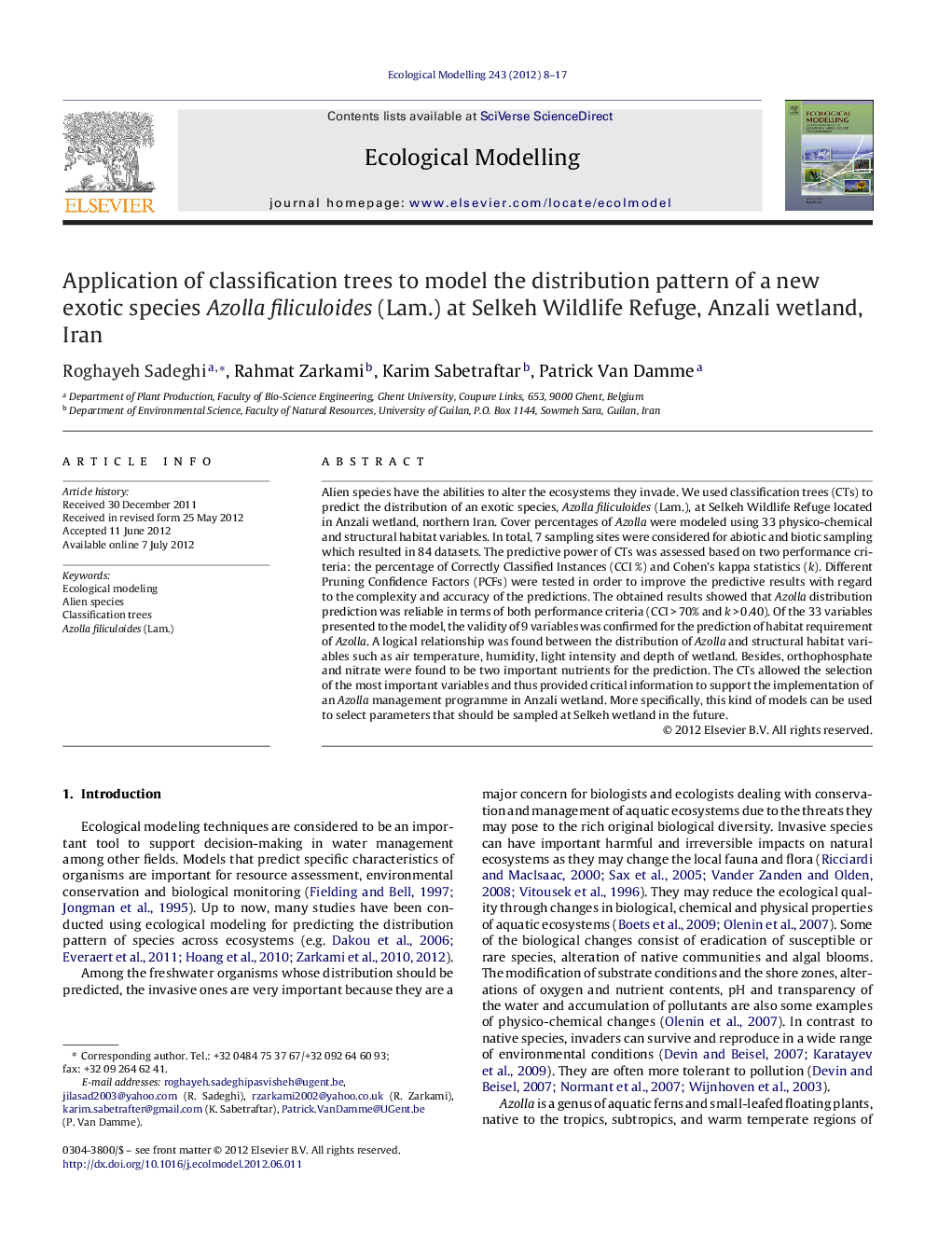| Article ID | Journal | Published Year | Pages | File Type |
|---|---|---|---|---|
| 4376329 | Ecological Modelling | 2012 | 10 Pages |
Alien species have the abilities to alter the ecosystems they invade. We used classification trees (CTs) to predict the distribution of an exotic species, Azolla filiculoides (Lam.), at Selkeh Wildlife Refuge located in Anzali wetland, northern Iran. Cover percentages of Azolla were modeled using 33 physico-chemical and structural habitat variables. In total, 7 sampling sites were considered for abiotic and biotic sampling which resulted in 84 datasets. The predictive power of CTs was assessed based on two performance criteria: the percentage of Correctly Classified Instances (CCI %) and Cohen's kappa statistics (k). Different Pruning Confidence Factors (PCFs) were tested in order to improve the predictive results with regard to the complexity and accuracy of the predictions. The obtained results showed that Azolla distribution prediction was reliable in terms of both performance criteria (CCI > 70% and k > 0.40). Of the 33 variables presented to the model, the validity of 9 variables was confirmed for the prediction of habitat requirement of Azolla. A logical relationship was found between the distribution of Azolla and structural habitat variables such as air temperature, humidity, light intensity and depth of wetland. Besides, orthophosphate and nitrate were found to be two important nutrients for the prediction. The CTs allowed the selection of the most important variables and thus provided critical information to support the implementation of an Azolla management programme in Anzali wetland. More specifically, this kind of models can be used to select parameters that should be sampled at Selkeh wetland in the future.
► We modeled classification trees to predict the distribution pattern of Azolla. ► The prediction of Azolla was reliable based on two performance criteria. ► The structural variables had more contribution to the prediction than the physico-chemical ones. ► The prediction will be more reliable by adding more dataset and pertinent variables to the model.
